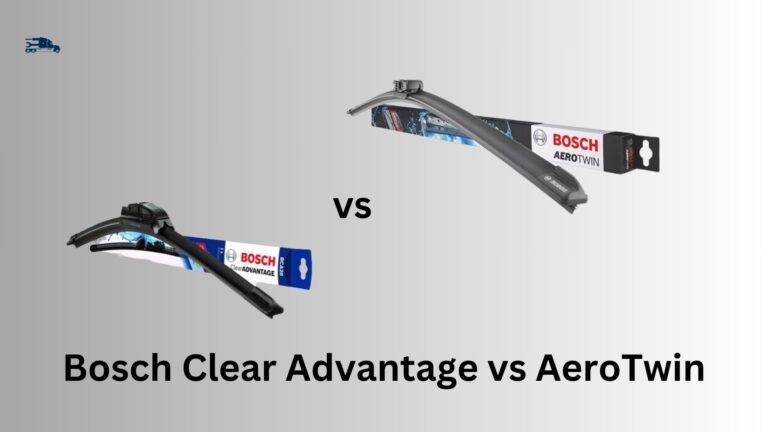Have you ever wondered what keeps your vehicle’s wheels firmly planted on the road, providing a smooth and controlled ride? It’s all thanks to the suspension system! This blog post will delve into suspension systems, focusing on two popular options: the J-Bar and the Panhard Bar. We’ll explore their functions, compare their advantages and disadvantages, and help you understand why choosing the right suspension system is crucial for optimal performance.
What is a J-Bar?
The J-Bar is a suspension system component that plays a crucial role in controlling the rear axle’s movement in a vehicle. It consists of a solid rod-shaped like the letter “J,” which connects the chassis to the rear axle. The J-Bar is typically mounted at an angle, allowing it to resist lateral and longitudinal forces.
The primary function of the J-Bar is to limit the rear axle’s movement during acceleration, deceleration, and cornering. Doing so helps enhance traction, stability, and overall control of the vehicle. The J-Bar acts as a lateral locator, preventing excessive side-to-side movement of the rear axle and reducing body roll during cornering.
One of the advantages of using a J-Bar is its simplicity and effectiveness in controlling rear axle motion. It is commonly used in cars, particularly dirt and oval track racing, where precise rear axle control is crucial for optimal performance.
What is a Panhard Bar?
The Panhard Bar is another type of suspension component that helps stabilize lateral movement in a vehicle. It consists of a rigid bar connecting the chassis to the axle, running parallel to the rear axle. The Panhard Bar is typically mounted on one side of the axle, extending to the opposite side of the vehicle’s chassis.
The primary function of the Panhard Bar is to maintain the lateral position of the axle during cornering. It helps control and minimize body roll, improving stability and overall handling. The Panhard Bar works by resisting the side-to-side movement of the axle, keeping it centered and aligned with the vehicle’s chassis.
The Panhard Bar is common in street and off-road vehicles, where stability and control are essential. It offers a practical and effective solution for maintaining proper axle alignment, especially during tight turns and uneven terrain.
J-Bar vs. Panhard Bar
When comparing the J-Bar and Panhard Bar suspension systems, there are a few key differences to consider. The J-Bar primarily controls rear axle movement, while the Panhard Bar stabilizes lateral movement. The J-Bar is commonly used in racing cars, while the Panhard Bar is more prevalent in street and off-road vehicles.
The J-Bar’s angled design allows it to resist lateral and longitudinal forces, providing superior rear axle control during acceleration, deceleration, and cornering. On the other hand, the Panhard Bar’s parallel alignment helps maintain the lateral position of the axle, reducing body roll and enhancing stability during cornering.
Choosing between a J-Bar and a Panhard Bar depends on vehicle type, intended usage, and performance goals. Considering these factors and seeking expert recommendations is essential to determine the most suitable suspension system for your specific needs.
Differences Between J-Bar and Panhard Bar
| J-Bar | Panhard Bar | |
| Geometry | Solid rod in the shape of the letter “J” | Rigid bar running parallel to the rear axle |
| Use | Commonly used in racing cars, especially dirt and oval track racing | Found in street cars and off-road vehicles |
| Adjustability | Offers more adjustability options | Limited adjustability, mainly for centering the axle and maintaining alignment |
| Vehicle Type and Usage | Ideal for racing cars and high-speed events | Suitable for street cars and off-road vehicles |
| Performance Goals | Advantages in speed and aggressive handling | Suitable for stability and comfort |
| Budget | Potentially higher price due to specialization in racing | Consider budget constraints |
| Aftermarket Options | Consider availability of aftermarket options for customization | Ensure options are readily available |
When it comes to suspension systems, understanding the differences between the J-Bar and Panhard Bar is crucial in making an informed decision for your vehicle.
Geometry
The J-Bar features a solid rod in the shape of the letter “J,” which connects the chassis to the rear axle. Its angled design allows it to resist lateral and longitudinal forces, providing superior control over the rear axle’s movement. On the other hand, the Panhard Bar consists of a rigid bar that runs parallel to the rear axle, connecting the chassis to the axle on one side. This configuration helps maintain the lateral position of the axle during cornering, reducing body roll and enhancing stability.
Use
The J-Bar is commonly used in racing cars, particularly in dirt and oval track racing. Its ability to control rear axle movement and resist lateral and longitudinal forces makes it well-suited for high-speed maneuvers and optimal traction. On the other hand, the Panhard Bar is frequently found in street cars and off-road vehicles. It provides stability and control by maintaining proper axle alignment during cornering and navigating uneven terrain.
Adjustability
Regarding adjustability, the J-Bar offers more options than the Panhard Bar. The J-Bar can be adjusted to fine-tune the rear axle’s positioning, allowing for precise handling characteristics. This adjustability is particularly beneficial in racing, where small changes can significantly impact performance. On the other hand, the Panhard Bar typically has limited adjustability, with adjustments mainly focused on centering the axle and maintaining proper alignment.
Which Suspension System is Right for You?
Choosing between the J-Bar and Panhard Bar suspension systems requires careful consideration of various factors.
Vehicle Type, Usage, and Intended Performance Goals
The type of vehicle you have, and its intended usage play a significant role in determining the ideal suspension system. If you own a racing car and participate in high-speed events like dirt track or oval track racing, the J-Bar may be the better choice. Its ability to control rear axle movement and resist lateral and longitudinal forces can enhance traction and stability during intense maneuvers. On the other hand, if you have a street car or off-road vehicle, the Panhard Bar’s ability to maintain proper axle alignment and reduce body roll can provide the stability and control you need for everyday driving or off-road adventures.
Consider your performance goals as well. The J-Bar’s adjustability may be advantageous if you prioritize speed and aggressive handling. However, the Panhard Bar’s simpler design may suffice if you value stability and comfort.
Budget Considerations and Availability of Aftermarket Options
Budget is an important factor to consider when choosing a suspension system. The J-Bar, being more commonly used in racing, may have a higher price point due to its specialized nature. Additionally, the availability of aftermarket options for both the J-Bar and Panhard Bar should be considered. If customization and adjustability are crucial to your needs, ensure that aftermarket options are readily available for the chosen suspension system.
Technical FAQs
1: What is the primary difference between the J-Bar and Panhard Bar?
While both suspension systems serve similar purposes, their designs and functionality differ. The J-Bar features a unique “J” shape and provides superior control over rear axle movement, making it ideal for racing. The Panhard Bar, on the other hand, maintains lateral axle position during cornering and is commonly used in street cars and off-road vehicles.
2: Which suspension system offers better adjustability?
The J-Bar offers more adjustability options compared to the Panhard Bar. Its design allows for fine-tuning of the rear axle’s positioning, which can significantly impact handling characteristics. However, the Panhard Bar generally has limited adjustability, focusing mainly on axle alignment.
3: Can the Panhard Bar be used in racing applications?
While the Panhard Bar is primarily used in street and off-road vehicles, it can be used in some racing scenarios. However, its limited adjustability and specific design features may make it less suitable for high-speed racing than the J-Bar.
4: Which suspension system is more cost-effective?
The cost-effectiveness of each suspension system depends on various factors, including the vehicle type, aftermarket options, and individual preferences. The J-Bar, being more specialized and commonly used in racing, may have a higher price point. The Panhard Bar, being more widely used and simpler in design, is more budget-friendly.
5: Are case studies or expert recommendations available for these suspension systems?
Yes, numerous case studies and expert recommendations are available for both the J-Bar and Panhard Bar. These resources can provide valuable insights into each suspension system’s performance, suitability, and real-world applications. Consulting experts in the field or researching case studies can help you make an informed decision based on your specific needs and requirements.
Conclusion
Understanding the differences between the J-Bar and Panhard Bar in suspension systems is crucial for making an informed decision. Whether you’re a racing enthusiast or a street car driver, choosing the right system can greatly impact your vehicle’s performance and stability. When choosing, consider factors such as vehicle type, usage, adjustability, budget, and expert recommendations.
Remember these key points:
- The J-Bar offers superior control and adjustability, making it ideal for racing applications.
- The Panhard Bar maintains lateral axle position and is commonly used in street and off-road vehicles.
- Consider your vehicle’s intended usage and performance goals when selecting a suspension system.
- Budget considerations and the availability of aftermarket options should also be considered.
- Seek expert recommendations and review case studies to gain valuable insights.
By carefully considering these factors, you can choose the suspension system that best suits your needs and enhances your driving experience.


